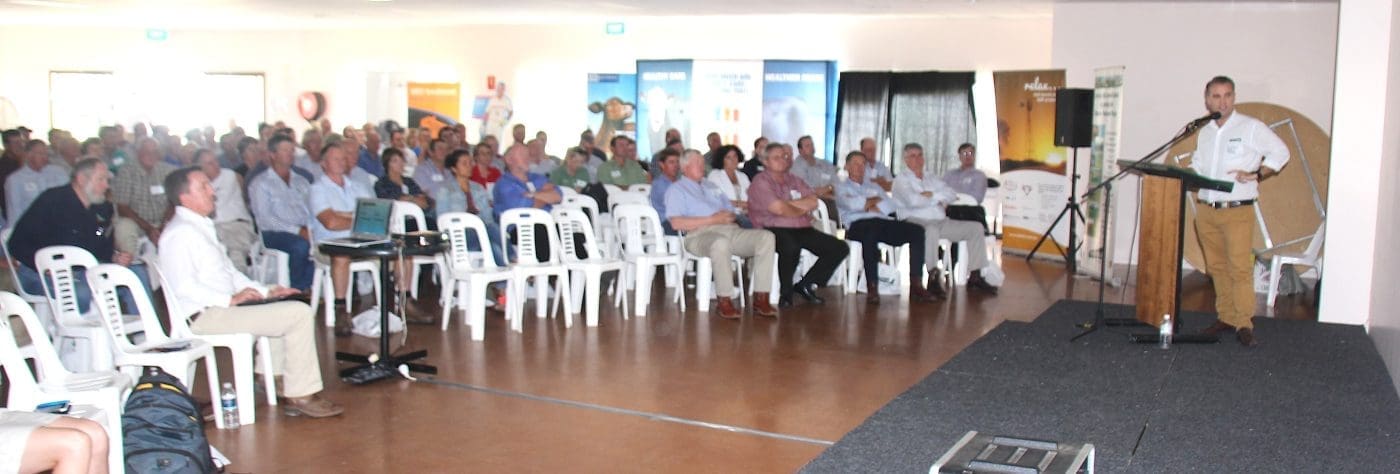
More than 250 cattle producers and feeders from across eastern Australia attended a Riverina Australia beef industry information day in Warwick yesterday.
A re-injection of Chinese demand that has pushed sorghum prices up by $20-25 per tonne in recent days appears likely to maintain strength for another two months.
The forecast was given to a beef cattle field day at Warwick yesterday organised by Riverina Australia, and attended by more than 250 cattle producers and feeders from throughout Eastern and Southern Australia.
Riverina Australia grains manager Jon Mulally told the audience that sorghum prices in Australia had been easing since rainfall in late December and early January lifted production and supply prospects.
As recently as December, Riverina’s view was that the 2014-15 Australian sorghum crop would track towards a total of 1.2 million tonnes. However the Christmas/New Year period rainfall has pushed Riverina’s production forecast up to 1.8m tonnes.
At the same time China has been busily consuming sorghum from the US, taking an estimated 60-70pc of US production so far this year.
At the beginning of the season, the US estimated it would export about 7m tonnes of its forecast 11m tonne sorghum crop to China. That volume has now already been exported to China in the first five months.
China is now looking for more sorghum, and Australia is its target.
In the past 10 days that new injection of demand has led to a $25/t rally in the price of sorghum.
“The demand at the moment is insatiable for our sorghum,” Mr Mulally said.
“And in the short term it doesn’t look like it is going to abate.”
Australian sorghum is currently $4-$5/tonne cheaper delivered to China than sorghum from the US.
“And with the dropping of the dollar, we’re going to get cheaper and our domestic price keeps going higher.”
Chinese demand for bulk sorghum in recent years had led to the construction of several facilities on the Darling Downs which enable sorghum to be loaded into shipping containers for export.
“There would be five or six packing facilities that could quite easily pack 200,000 to 300,000t per month of sorghum combined, so the capacity is there to move it, and the demand is there to move it,” Mr Mulally said.
“If we were just purely on a global market the sorghum influence should have softened today, but in fact it hasn’t, the demand is still there and people are still here to buy.
“The Chinese market will stay strong for Australian sorghum, probably for the next two months.
“By the time you get to August, the new US sorghum crop comes online and generally the demand will shift over to there because they will be cheaper – right now they are at the end the US sorghum season, and we’re just at the beginning, that is why they are going for us.”
Mr Mulally said important factors to watch that will affect feed grain pricing in the next 12 months included:
Black sea geopolitical risk: The Black Sea region exports around 10pc of the world’s grain, but volumes are highly dependent on Russian Government decisions as to whether grain will be exported or not at any particular time. At present their exports are moving at full pace and they have exported about 30 million tonnes, or about 10pc of global trade. “So that is still going but it is something to watch,” Mr Mulally said.
Northern Hemisphere winter wheat conditions/spring planting: The freeze in the US is critical to its winter wheat crop. US farmers need an insulation blanket on their emerging seed, so they want the snowfall, but the timing of melt is critical to how the crop emerges.
Currency: The US $ is expected to continue on its bullish run against the Australian dollar. A lower A$ directly translates to potentially higher grain prices.
Indian exports: India is having a neutral effect at the moment but it does have the potential to weigh in on world prices, because it offers an alternative supply source for the Chinese market. “The quality isn’t as good as the Australian grain, but at a price they will take whatever they can,” Mr Mulally said.
El Nino?: There have been several reports emerging in the media lately suggesting an El Nino weather pattern will dominate in 2015-16, however, forecasts can only be made with accuracy when the next ENSO pattern forms in June/July. At present forecasts were like a ‘roulette wheel’, Mr Mulally said. Trade winds are currently pushing from the western Pacific and pushing East, drawing moisture away from eastern Australia, which supports an El Nino trend, but it was still too early to make forecasts with certainty at this point.
